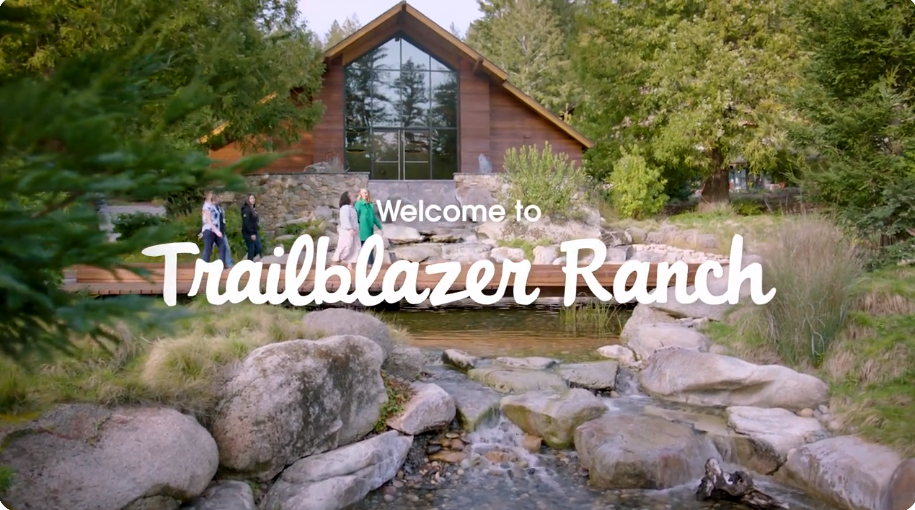How to set your company retreat goals

Company retreat goals are the compass that guides your retreat to success.
At Basejam, we’ve helped dozens of startups and high-performing teams plan and execute meaningful retreats—and we know just how important (and challenging) it is to get the goal-setting aspect right.
So, in this guide, we thought we’d offer some insight into setting company retreat goals to help you kick your planning off well.
Let’s dive in.
What is a company retreat goal?
Great company retreats are planned around goals.
These goals can be simple (e.g., “to relax and unwind after a busy quarter”) or complex (e.g., “to develop a new product strategy”). Your goals will depend on your company's mission and culture, but they should all have concrete outcomes.
In case you need some inspiration before we dive into the process of setting retreat goals, here are a few examples:
Examples of company retreat goals
Company culture immersion retreats
Company culture immersion retreats aim to strengthen relationships between members of the team with each other and the company at large.
A great example is Salesforce’s Trailblazer Ranch retreat.

This retreat helps employees become acquainted with the company's culture through fun, inspiring activities built around the core values. It’s a low-pressure environment designed to get employees to really understand why our company does what it does.
Informal annual general meeting (AGM)
An informal AGM elevates colleagues' voices and helps them understand their roles in the company better. It also gives everyone a chance to share ideas and opinions, which can be used to inform directions and strategies for the organization.

Berkshire Hathaway has this goal in mind with its annual meeting in Omaha, Nebraska, where employees and management discuss topics such as investments, strategy for the future, and how best to use company resources.
Strategy and bonding retreats
A strategy and bonding retreat combines work and companionship to achieve specific organisational objectives. It's a chance for the worldwide team to gather in a different venue to focus on strategic planning while developing team relationships.
Themed lunches, games, activities, and local adventures can inject a bit of fun into the work-focused agenda, making it a memorable and effective approach to meet strategic and team-building goals.
Located on an idyllic island on the Blackwater Estuary, near Essex, this venue offers a unique experience for all guests. It is surrounded by 550 acres of beautiful gardens, orchards, meadows and salt marsh and is available for exclusive hire for larger teams.
Why set company retreat goals?
Improved team collaboration
Company retreats offer a unique setting for team members to bond and form partnerships. Setting goals that enhance collaboration might help your team operate more effectively together.
Increased productivity
Setting specific retreat goals helps your team stay focused and motivated. This concentration can lead to higher production and better results for your company.
Better decision-making
Retreats allow your team to shift from day-to-day operations and focus on the bigger picture. Goals related to strategic planning or problem-solving can lead to better decision-making that benefits your business in the long run.
How to set your company retreat goals
Step 1: Define the purpose of the retreat
The purpose of your retreat is the overarching “why” behind it. Without a purpose, your retreat can quickly become directionless—and that often translates to less effective.
To come up with a purpose, think about challenges you’re trying to overcome or things you're trying to improve. This could be anything from team dynamics and communication to creating and launching a new product or service. Choose one or more related topics and use them as a “touchstone” for your planning.
Common examples of retreat purposes are:
- To build team unity and collaboration
- To reframe company culture
- To develop an action plan for a new initiative
Don’t worry if your ideas are vague—we’ll clarify them below.
Step 2: Set clear and measurable objectives
Once you set a purpose for the retreat, it’s time to set measurable objectives.
Objectives refer to specific outcomes you want to reach by the end of the retreat. They should be concrete and measurable so that you can track progress—for example, “increase team collaboration” is too vague, while “develop a plan outlining three new team collaboration strategies” is more clear and actionable.
Step 3: Involve all stakeholders
You probably won’t have all the answers regarding setting objectives for your event.
Involve your team and ask them what things they’d like to achieve during the retreat. This will not only give you more ideas to work with, but it will also help ensure everyone is invested in the event’s success.
If it’s helpful, you can create different sets of objectives for different departments or teams within the organisation.
Step 4: Prioritise objectives
When time and money are limited, it's important to focus on the most important areas that will have the biggest impact. By dedicating enough time and attention to these essential objectives, you can ensure that the retreat is well-structured and productive.
Step 5: Be realistic
Realistic goal-setting is a crucial element of a successful company retreat. Setting attainable goals ensures that participants remain motivated throughout the retreat, as they can observe their progress. Achieving these realistic goals by the end of the retreat fosters a feeling of achievement and satisfaction.
Step 6: Consider past performance
Recognising and building on previous accomplishments boosts morale and supports the team's strengths while highlighting areas for improvement. This ensures that the retreat acts as a platform for growth and development.
Step 8: Communicate goals effectively
When goals are conveyed clearly and transparently, team members clearly understand their roles and responsibilities in achieving these goals. This avoids misunderstandings and promotes alignment, ensuring everyone is on the same page and working together toward a single goal.
Step 9: Track progress
By periodically tracking your progress, you may determine how well you're progressing toward your goals and make timely adjustments if necessary. This increases the retreat's efficiency by allowing you to respond to problems and seize unexpected possibilities, resulting in a more productive and fulfilling getaway.
Step 10: Evaluate success
Evaluating the effectiveness of a retreat entails a holistic analysis of the entire event rather than monitoring progress toward the established goals. Gathering feedback from all stakeholders, including participants, organisers, and leaders, is part of this process.
Ready to plan your next retreat?
Establishing clear goals for your company retreat to ensure its success is crucial. These objectives promote teamwork, productivity, and effective decision-making. By defining the purpose of your retreat, setting measurable goals, and aligning them with your company's mission, you can create a retreat that yields meaningful results.
Are you looking to simplify the process of planning a retreat?
At Basejam, we connect busy teams with a curated list of beautiful venues worldwide. Set your requirements, find venues, and make your booking—no fees, no hassle.
Start planning your retreat today!

Use Basejam to find and book unique company retreat venues
Search our curated database, and enquire with any of our 70+ venues. No booking fees.
Browse venues

